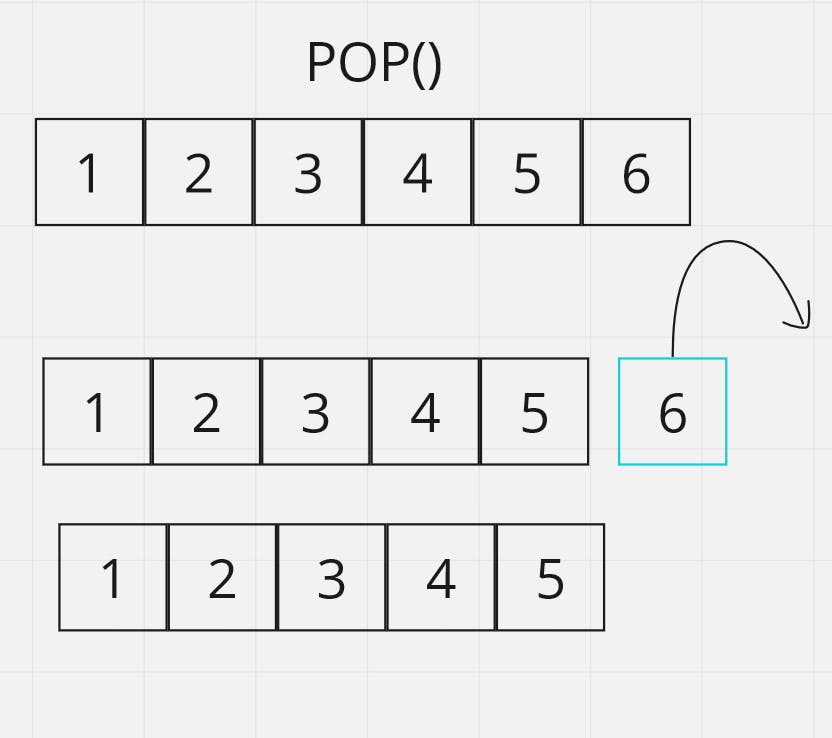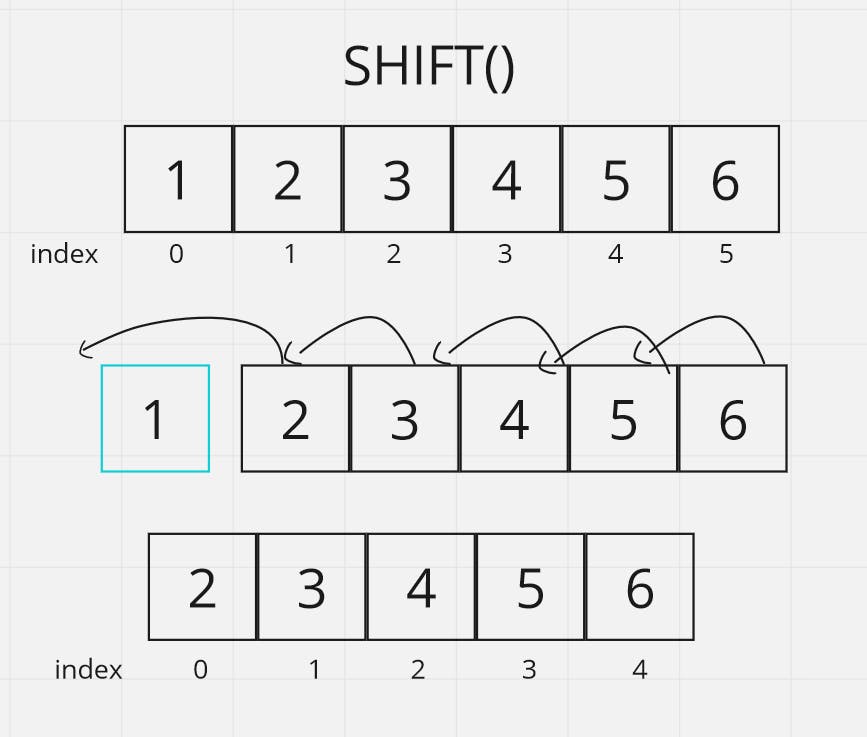Table of contents
Every Developer's out there must have used these methods at least once. Have you ever thought about the complexities between these two, If you haven't Let us take a look.
Brief explanation of what pop() and shift() methods in terms of arrays.
The pop() and shift() methods are two commonly used ways to manipulate arrays.
POP(): The pop() method is used to pop out the last element from the array. For Example:
let numbersArray=[1,2,3,4,5,6];
numbersArray.pop();
console.log(numbersArray);
//OUTPUT
//[1,2,3,4,5]
SHIFT(): The shift() method is used to remove the first element of the array. For Example:
let numbersArray=[1,2,3,4,5,6];
numbersArray.shift();
console.log(numbersArray);
//OUTPUT
//[2,3,4,5,6]
So this is simply how the pop and shift method works. Now we can talk about the complexities of both.
Complexities
POP() Method
Let us first take the pop() method. So the pop method is removing the last element from the array. When we look at this in terms of complexity level, we can see that only the last element is removed. Which means no matter how long the array is, it only takes a single step to remove the element. In the image below, only the last element is removed.

So we can see here only one step is taken to remove the last element so POP() Method will have a complexity of constant O(1).
By seeing the complexity of POP() Method. Can you guess the complexity of Shift() Method?
If you guessed the complexity of shift() to be the same as that of pop() that is O(1). Then you are wrong, they are not the same, wanna know why. Let's go!
Shift() Method
The shift() Method kinda feels like similar to pop() Method, but it is not. In both the methods an element is removed but in shift() along with that their index needs to be adjusted. So if the first element which has an index of 0 is removed, then the second element with the index of 1 must be moved to the place of 0th index. So this should be done to every other element. Look at the image below to get a clear idea.

Here, If you look at the index, you can see that they are changed. So in a shift() Method, every element in the array has to move down by one. If there are n elements, then n steps will occur, which makes this shift() Method to have a complexity of O(n).
It is important to know this when you are using shift() methods with large arrays as it can have a significant impact on the time and space complexity and hence the performance of the code.
So, I hope you understand why the POP() Method has a O(1) Complexity and the SHIFT() Method has a O(n) Complexity. Understanding these complexities will help you to write better, efficient code.
I hope this short and simple blog helps you to learn and understand the Complexities of pop() and shift(). Do try it out yourself and let me know what you think.
Thank You for reading this. More Contents To Come. Stay Tuned!

